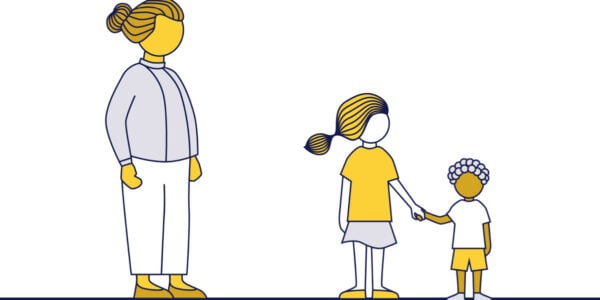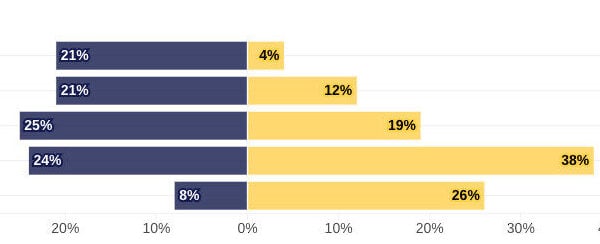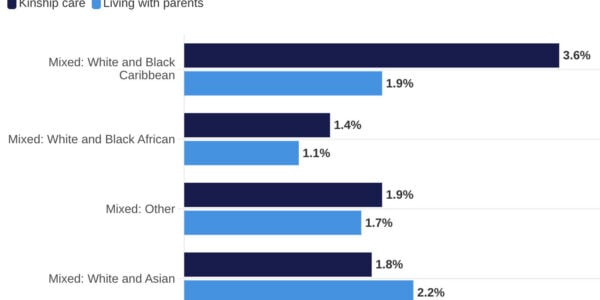One of Nuffield FJO’s aims is to find and fill the gaps in our understanding about children and families in the family justice system.
Who are they? Where do they live? Who do they live with? What is their journey through the system? What happens following contact with the system? It is only by answering these questions that we can ensure that the system is responding to the needs of the children and families involved.
We have set out what we already know in our infographic—and are working with others to fill the gaps.
One of the ways we are doing this is through the Family Justice Data Partnership (FJDP)—a collaboration between Lancaster University and Swansea University, funded by Nuffield FJO. FJDP is using novel data linkage methods to fill the evidence gaps, linking anonymous data from Cafcass and Cafcass Cymru about children involved in family law proceedings to other administrative datasets that contain information about the same children—for example, health or education data. In the long term this has the potential to vastly increase what we know about the characteristics and outcomes of children and families in the family justice system.
This blog summarises new research by the FJDP (PDF) to address one of the gaps identified in our infographic—who are children in the family justice system in Wales living with? The research also sheds light on housing security.
In order to answer this question, the team linked data collected by Cafcass Cymru to Welsh GP registration data held at the SAIL (Secure Anonymised Information Linkage) Databank. GP registration data includes information about where people live, their age, and how long they have been registered at a current address. Using this data, the researchers derived information about the relationships between people in the household, and how long families had been living there, which provides some information about housing security.
More information about the data sources and how this analysis was undertaken is available in our guidance note at the bottom of this page.
Key findings
Who are children living with?
The data shows that children involved in both public and private law proceedings are more likely to be living in lone-parent households than their peers. Around 10% of children involved in public law proceedings are living in households with their grandparents and without their parents—a much higher proportion than in the comparison group. This perhaps suggests that kinship care arrangements are in place. Prior to this analysis, the most recent estimates of the number of children living with grandparents in the general population came from analysis of 2011 census data (Wijedasa 2017).
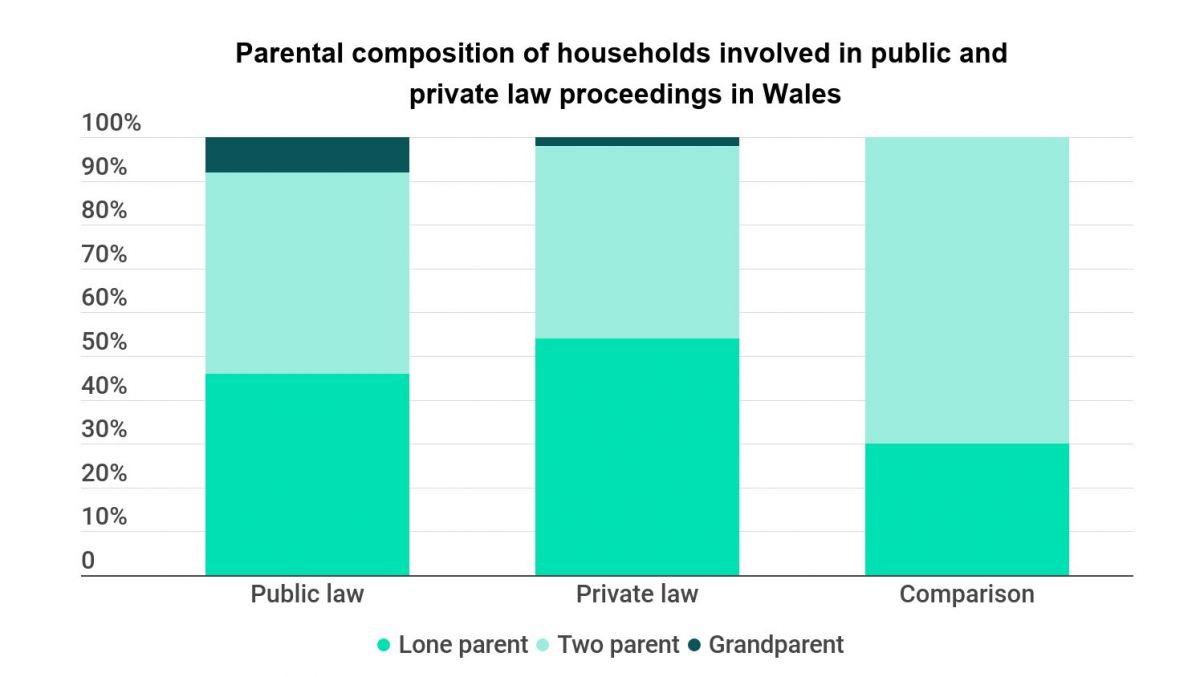
The data also helps us understand how many other children might be living in a household, such as siblings or step-siblings. The graph below shows that the majority of households lived in by children involved in private law proceedings in Wales have one or two children living in them. There are slightly more families with three or more children living them in public law proceedings than in private law proceedings or in the comparison group.
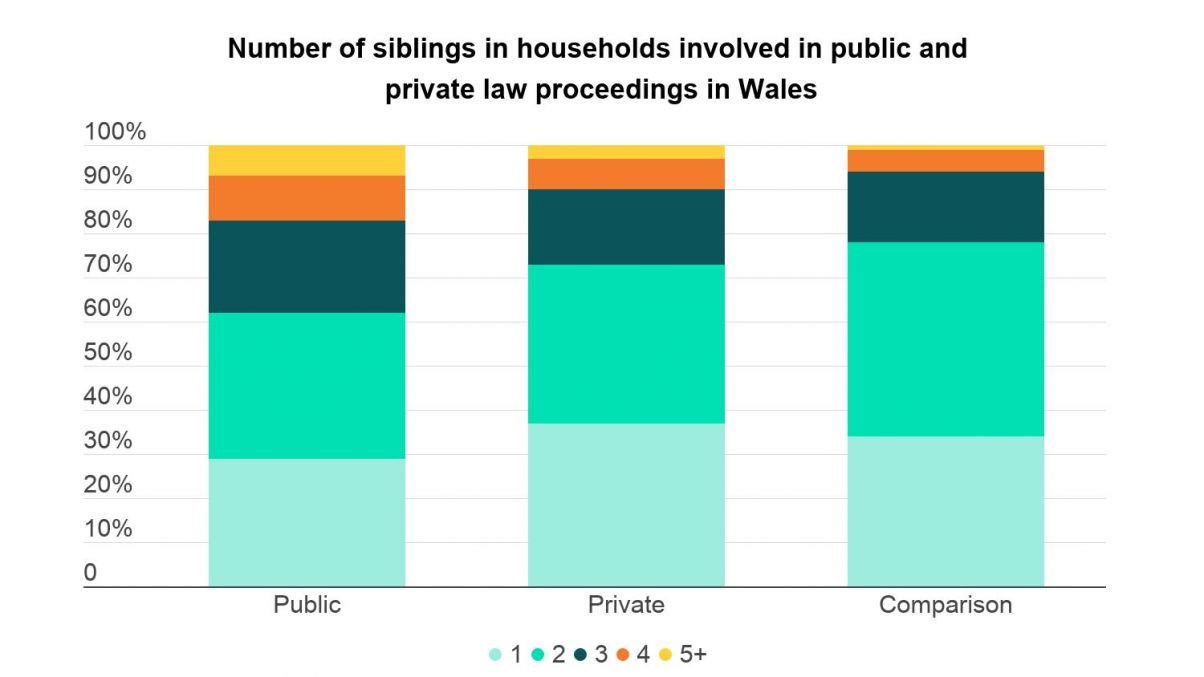
We can compare this to other research about the number of public and private law cases that involve siblings. We know that in England around 37% of public law cases involve more than one child (NFJO 2021). In private law, around 60% of cases involve a single child, around 30% involve two siblings, and just 10% involve three or more siblings (Cusworth et al. 2020, 2021). This suggests that not all children living in a household will be involved in proceedings.
Household insecurity
Average tenancy duration was also calculated using the number of years a family had been living at their address prior to the family court application. This provides a measure of household insecurity—a factor that is linked to deprivation.
Average tenancy duration was lower for families involved in both public and private law proceedings than in the comparison sample, where the average tenancy duration was around eight years. In public law this was slightly lower, at six years, and even lower in private law, with an average of five years. This suggests greater housing insecurity among families involved in public and private law proceedings in Wales, and links to previous FJDP research which has shown a clear link between deprivation and public and private law need (Johnson et al 2020Griffiths et al 2020Cusworth et al. 2020, 2021). The fact that tenancy duration was lowest among private law families is noteworthy, perhaps indicative of the upheaval associated with family separation, and a need for greater support and assistance for families in private law proceedings.
Next steps
Linking Cafcass Cymru data to GP registration data has helped us fill in some of the gaps about who children in the family justice system are living with in Wales. FJDP is planning to build on this work and to help answer further questions by linking to other data sources. For example, by linking to national health data, the physical and mental health of family members can be examined. Understanding who is coming to court, their circumstances and characteristics, will enable us to better understand the needs of children and families in the family justice system, and to direct support and resources to those that need it most.
The analysis was carried out by Rhodri Johnson and Lucy Griffiths (Swansea University) as part of the Family Justice Data Partnership.

